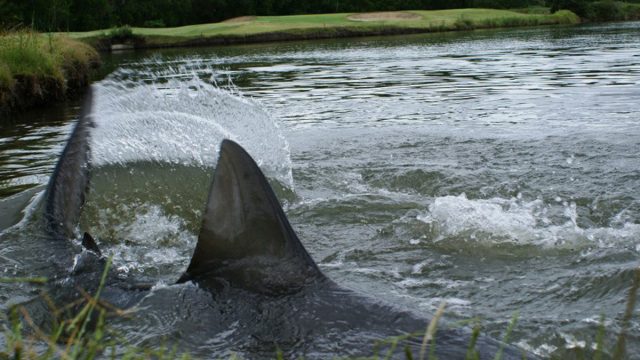Bull sharks are aggressive sharks that usually live near high-population areas like tropical shorelines. While some sharks only live in the ocean, the blunt snouted sharks are not bothered by brackish and freshwater and can live inland via rivers and tributaries. They can even live on golf courses. One Australian golf course had six bull sharks in residence for several years. However, they recently disappeared. Here’s what you need to know about the bizarre story.

Carbrook in Queensland hosted six resident bull sharks for 17 years, who mysteriously arrived at the golf course almost nine miles from the Pacific Ocean.

The sharks ended up in a lake on the golf course in the 1990s, likely traveling there in the Logan River, which flows inland from the sea halfway between Brisbane and the Gold Coast. A flood could have swept them into the lake.

They were a mythical phenomenon at first. People would report hearing loud splashes, seeing large dark shapes moving below the lake’s surface, and even claims of tall dorsal fins knifing swimming through the water.

“The Loch Ness monster is pretty similar to what it felt like,” Carbrook general manager Scott Wagstaff told CNN.
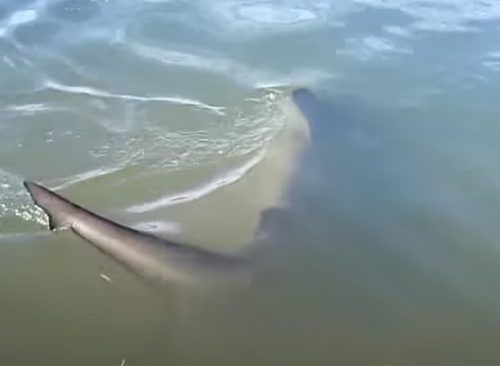
In the early 2000s, the sharks were confirmed via a photo. However, Carbrook didn’t see one until 2010, when he walked down to the lake with a camera and meat. He took a “terrible” photo, which ended up a viral YouTube video wracking up over 2.3 million views to date.

The club quickly became known for the sharks, adding the fish to their logo. At a wedding in 2009, all six sharks made an appearance.
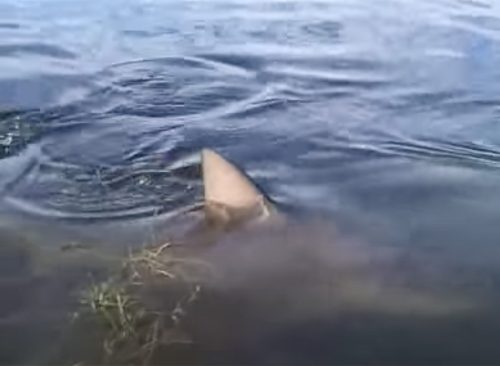
Only twice before had bull sharks been recorded surviving for years in isolated bodies of water, according to Dr. Peter Gausmann, who published his study on the Carbrook sharks. However, none survived as long as the six on the golf course.
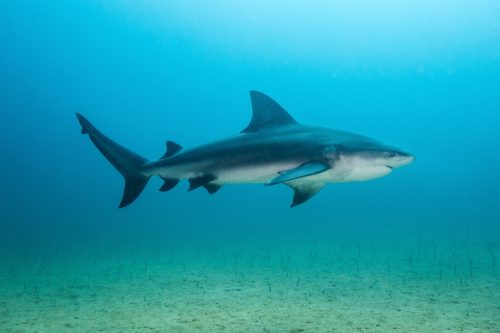
“This out of the ordinary occurrence has shown verifiably for the first time how long bull sharks are able to survive in these low-salinity environments,” Gausmann told CNN. “The study has shown that bull sharks presumably have no limits to their residential time in freshwater environments such as lakes and rivers, and they are presumably – at least theoretically – able to spend their entire lifetime in these habitats.”
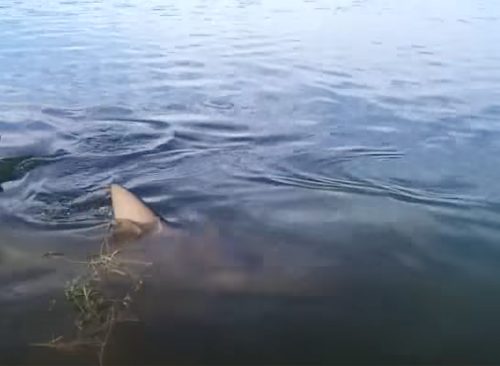
Unfortunately, the sharks started vanishing after the 2013 floods, and it has been eight years since the last one was spotted in the lake. Only two have been confirmed dead: One from illegal fishing and the other found floating on the surface.
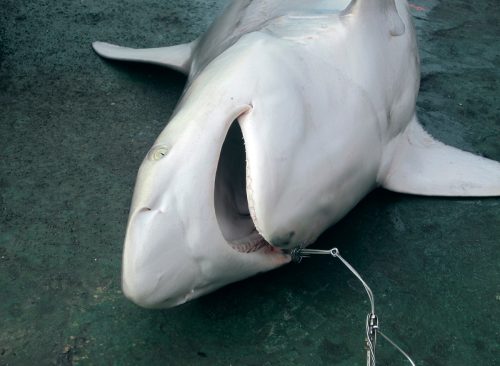
Gausmann doesn’t think the sharks died the “natural way” due to sodium loss or another “anatomical” failure, given their adaptability. He believes illegal fishing is the “most likely” explanation for their disappearance.

“You can’t help yourself – you walk along the lake and you’re looking in, waiting to maybe catch a glimpse of a fin breaking the water,” Wagstaff said. “The members loved the fact that their golf course was their unique place in the world where we had sharks; they just embraced it.”
RELATED: 15 Things You Should Never Do at the Doctor’s Office, Say Doctors
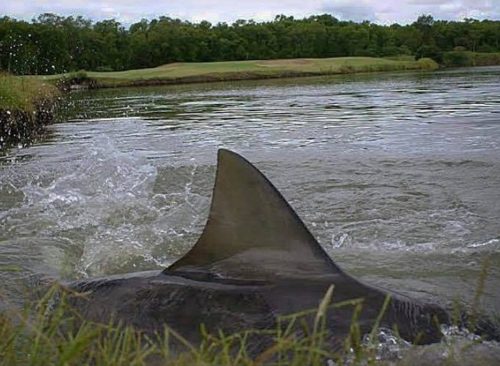
“There’s this kind of legend about sharks being aggressive because they’re coming into contact with humans, especially bull sharks because of the places they tend to swim – canals, creeks and rivers,” Wagstaff said. “But then to experience them in such close proximity and see how beautiful they are and how graceful they are – now I just find them fascinating, especially the bull shark. They’re capable, so adaptive, and they are seriously beautiful when you’re a few feet away. It’s an incredible shark.”
